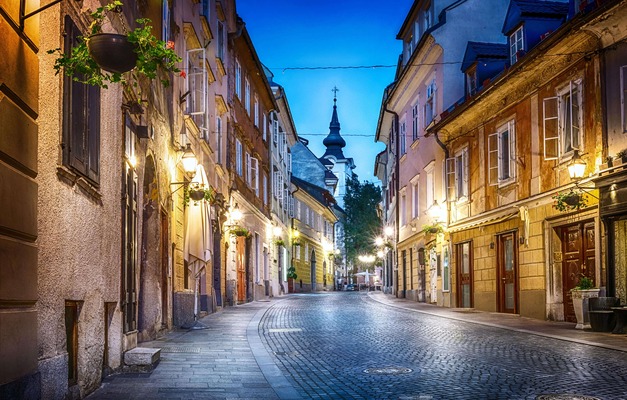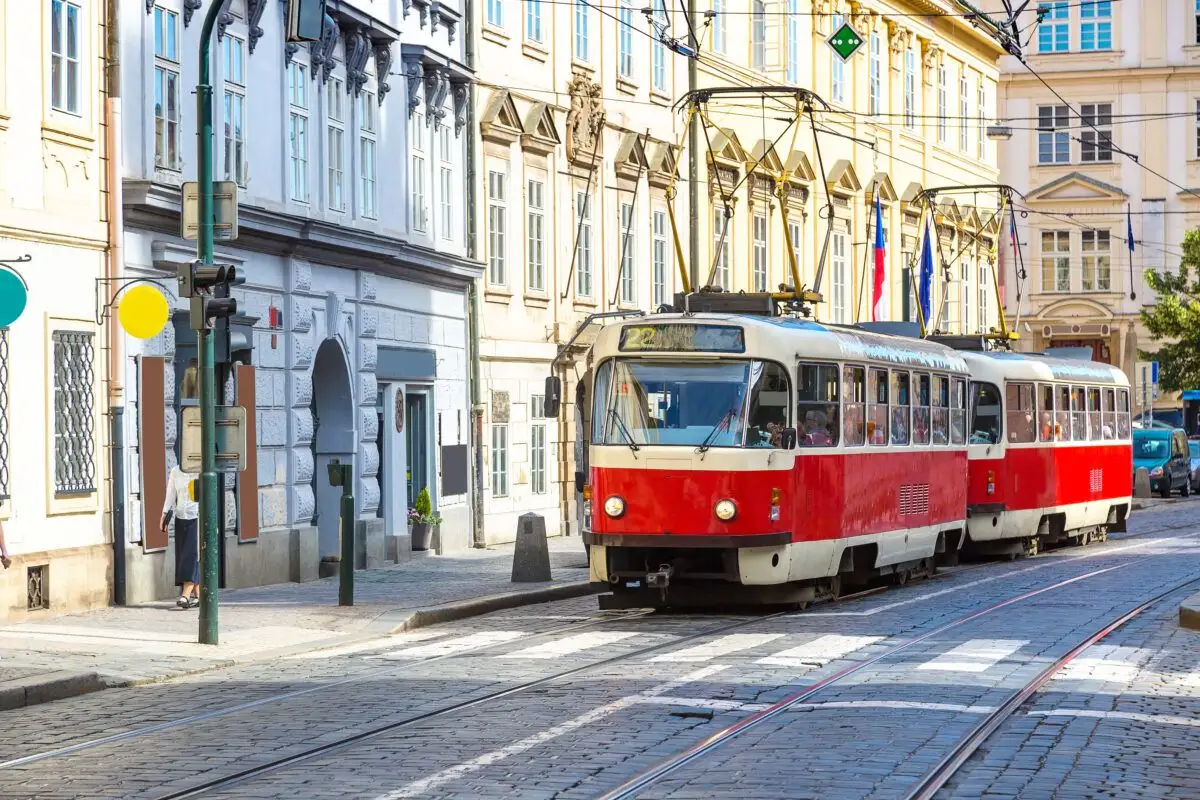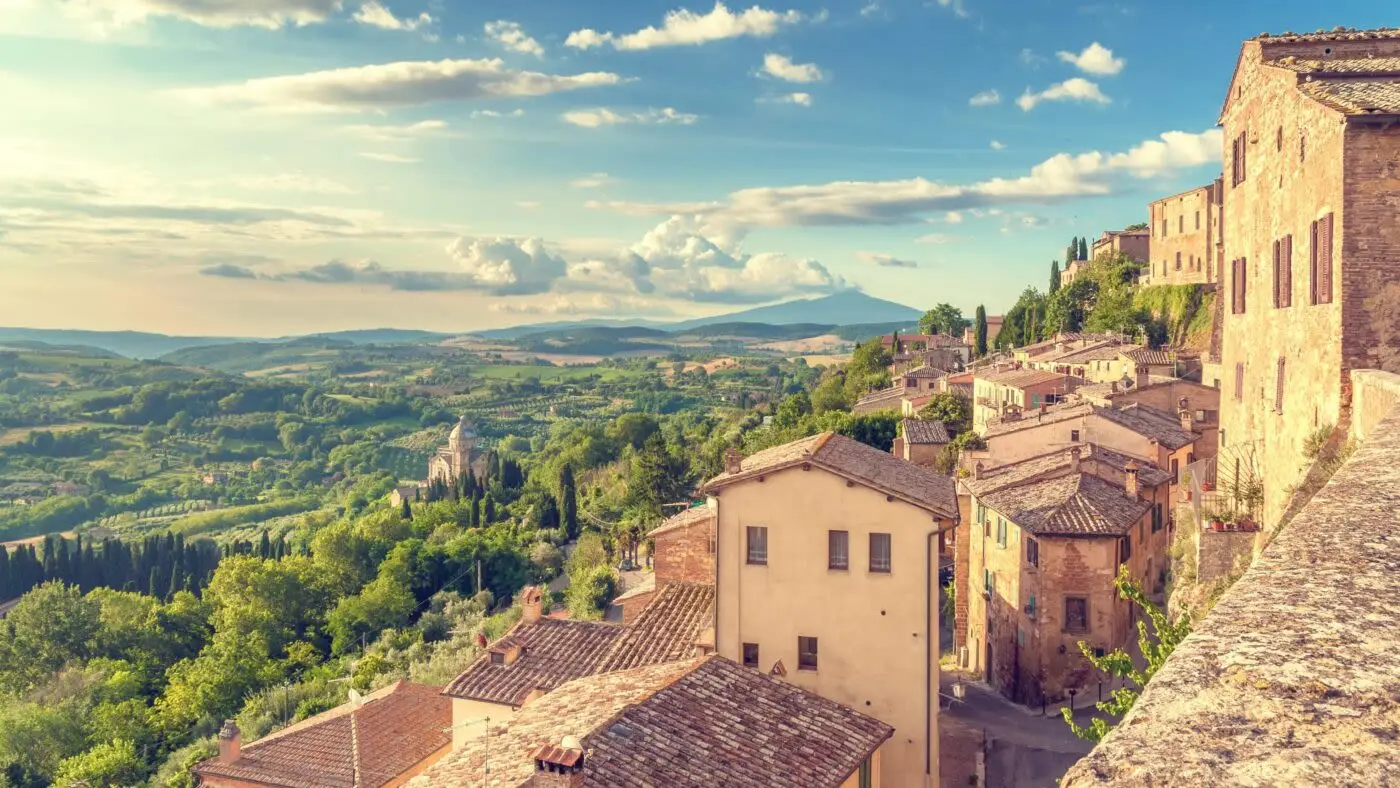
5-Day Amalfi Coast and Gulf of Naples Adventure
 5 Day Tour of Sorrento
5 Day Tour of Sorrento
Overview
Trip Map
Itinerary
Inclusions
Reviews
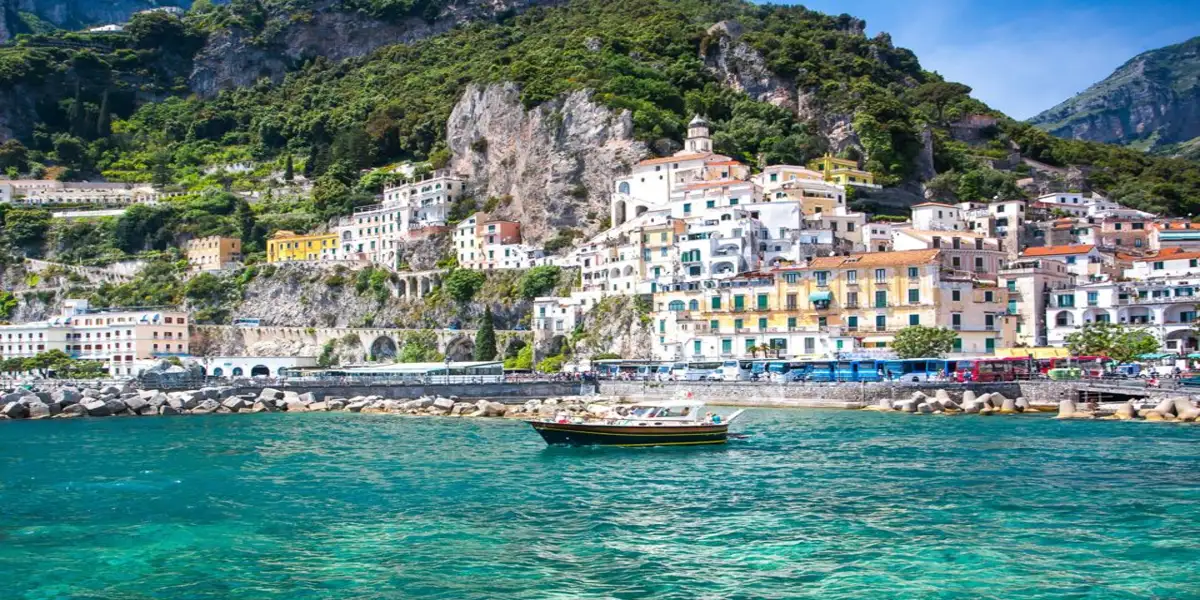
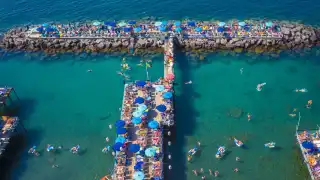





5 Days 4 Nights
Best Time: Jan-Dec
Beach Lovers
History Buffs
Experience the breathtaking beauty of southern Italy with our 5-day Amalfi Coast and Gulf of Naples Adventure, where you’ll explore picturesque coastal towns, serene islands, and historic ruins. Stay in seaside Sorrento, known as the “Gateway to the Amalfi Coast”. Journey by ferry to the islands of Capri & Ischia, where dramatic cliffs and unforgettable beauty await, and discover the ancient ruins of Herculaneum. Each day promises a new highlight, from the crystal-clear waters of the Tyrrhenian Sea to the stunning landscapes of Villa Cimbrone. With detailed travel guidance through our mobile app, your trip will be seamless and memorable.
- Visit the iconic Blue Grotto on a self-guided excursion to the island of Capri.
- Explore the historic ruins of Herculaneum on a private guided tour from Sorrento.
- Ascend Mount Vesuvius for breathtaking views over Pompeii and the Bay of Naples.
- Relax on the picturesque beaches of Ischia, the largest island in the Bay of Naples.
- Marvel at the stunning views from the gardens of Villa Cimbrone along the Amalfi Coast.
Experience the breathtaking beauty of southern Italy with our 5-day Amalfi Coast and Gulf of Naples Adventure, where you’ll explore picturesque coastal towns, serene islands, and historic ruins. Stay in seaside Sorrento, known as the “Gateway to the Amalfi Coast”. Journey by ferry to the islands of Capri & Ischia, where dramatic cliffs and unforgettable beauty await, and discover the ancient ruins of Herculaneum. Each day promises a new highlight, from the crystal-clear waters of the Tyrrhenian Sea to the stunning landscapes of Villa Cimbrone. With detailed travel guidance through our mobile app, your trip will be seamless and memorable.
- Visit the iconic Blue Grotto on a self-guided excursion to the island of Capri.
- Explore the historic ruins of Herculaneum on a private guided tour from Sorrento.
- Ascend Mount Vesuvius for breathtaking views over Pompeii and the Bay of Naples.
- Relax on the picturesque beaches of Ischia, the largest island in the Bay of Naples.
- Marvel at the stunning views from the gardens of Villa Cimbrone along the Amalfi Coast.

San Francesco d'Assisi Church
Churches & Monasteries

Sorrento Cathedral
Churches & Monasteries

Piazza Tasso
Architecture

Marina Piccola
Regional Cuisine
Must see sights

San Francesco d'Assisi Church
Churches & Monasteries

Sorrento Cathedral
Churches & Monasteries

Piazza Tasso
Architecture

Marina Piccola
Regional Cuisine
Starting from
$1290
per person
 Not included
Not included Secure Your Customizable Trip
Enter your details to embark on a journey that can be tailored just for you.
Start
Travelers
0 travelers
Add Room
Remove Room
Preferred Hotel Stars
Select Hotel Stars
Craft Your Own Itinerary
Select your interests and destinations for a trip plan inspired by you.
Amalfi Coast Short Escape Trip - Map & Itinerary
Enable/Disable Map Scrolling
Click To Make Map Interactive

Amalfi Coast Short Escape Trip Timeline
 Edit Details
Edit DetailsArrival
4 nights
Sorrento
Italy
Departure
Day-By-Day Itinerary of Amalfi Coast Short Escape Trip
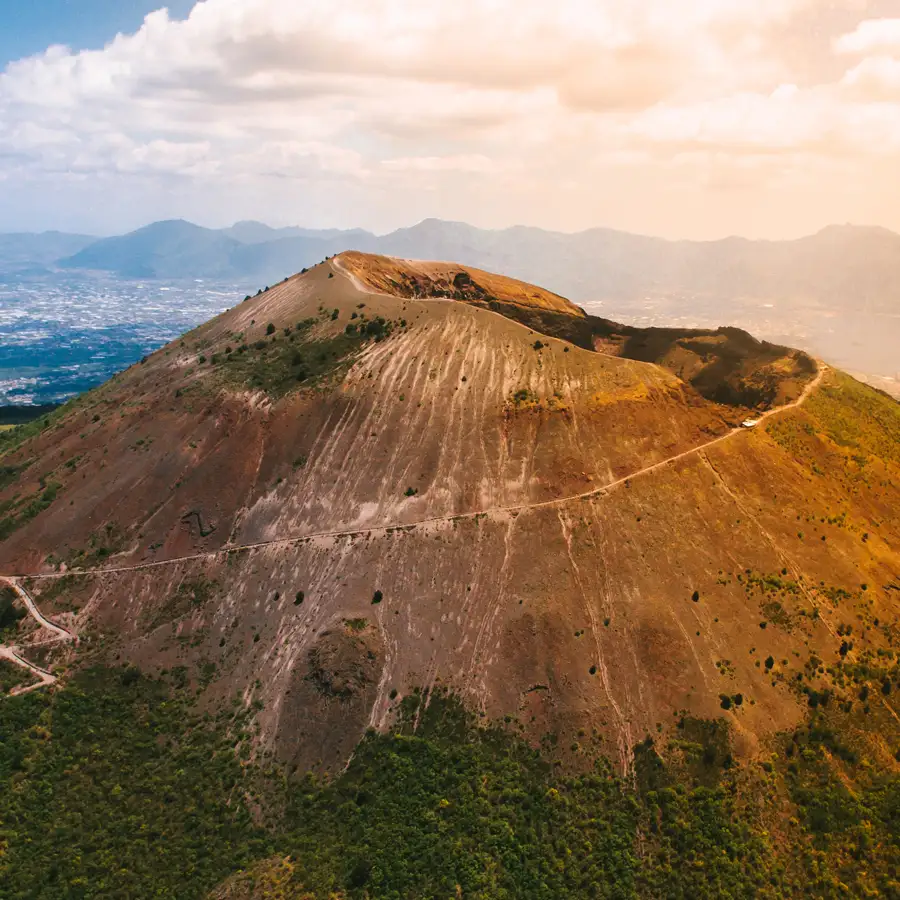
Day 1
Arrive Sorrento
Day 1
Arrive Sorrento



To Be Determined
Private Transfer, Naples Airport to Sorrento
A private transfer service will pick you up from the airport in Naples and take you directly to your hotel, N/A, in Sorrento. The journey will be in an air-conditioned vehicle with an English-speaking driver and will take around 1 hour 10 minutes in normal traffic. IMPORTANT NOTE: Please be aware the car service can fit up to 1 checked item of luggage and 1 personal item per person, such as a purse or small backpack. If you think you will have more baggage, please inform your travel consultant as this may result in an additional fee.

Day 1
Arrive Sorrento


Day 1
Arrive Sorrento




To Be Determined:
Private Transfer, Naples Airport to Sorrento
Mid-Day/Afternoon:
Mount Vesuvius
Late Afternoon:
Marina Piccola


Day 2
Sorrento
Day 2
Sorrento


Morning to Late Afternoon
Capri Island
There is no question that Capri is one of the most impressive spots in Italy. Surrounded by crystal clear waters, shimmering grottos and dramatic cliff-faces, it’s what dreams are made of. Made famous as the vacation hideaway of Roman emperors Augustus and Tiberius, the beautiful island of Capri is a fantastic day trip option from Sorrento by ferry. Spend your day exploring its two towns, Capri & Anacapri, take a boat trip to Capri's famous Blue Grotto or take a thrilling ride on the chairlift to Monte Solaro for beautiful views over Capri and the Bay of Naples.

Villa San Michele
Visit the beautiful residence of the Swedish physician and writer Alex Munthe, one of the top sights on the island.
Show More

Anacapri
Take a taxi or bus up to this pretty little village awash with boutique shops and high priced restaurants.
Show More

Blue Grotto
Take a boat trip around the island to reach this mystical Blue grotto cave.
Show More

Mount Solaro Chairlift
Take the chairlift up to Mount Solaro for amazing views over Capri and the Bay of Naples.
Show More

Villa San Michele
Visit the beautiful residence of the Swedish physician and writer Alex Munthe, one of the top sights on the island.
Show More

Anacapri
Take a taxi or bus up to this pretty little village awash with boutique shops and high priced restaurants.
Show More

Blue Grotto
Take a boat trip around the island to reach this mystical Blue grotto cave.
Show More

Mount Solaro Chairlift
Take the chairlift up to Mount Solaro for amazing views over Capri and the Bay of Naples.
Show More
prev
next

Day 2
Sorrento


Villa San Michele
 Highlight of Capri Island
Highlight of Capri IslandVisit the beautiful residence of the Swedish physician and writer Alex Munthe, one of the top sights on the island.
This beautiful 20th-century mansion is one of the top sights on the island. Sitting almost 1000 feet above the sea, visitors come to the villa to walk through its beautiful gardens and enjoy the panoramic views of the town of Capri. Inside the villa, you'll find a small museum home to a collection of archaeological artefacts found on the island.

Anacapri
 Highlight of Capri Island
Highlight of Capri IslandTake a taxi or bus up to this pretty little village awash with boutique shops and high priced restaurants.
High up the plateau above Capri town lies Anacapri, a smaller village (compared to Capri Town) which is much quieter and more authentic in feel. Stroll its white-washed lanes of artisan boutiques, take the chairlift to the top of Monte Solaro or walk to the nearby Villa San Michele.

Blue Grotto
 Highlight of Capri Island
Highlight of Capri IslandTake a boat trip around the island to reach this mystical Blue grotto cave.
Named the Grotto Azzurra in Italian (Blue Grotto), this famous sea cave is a popular trip from Capri by boat. Sunlight passing through the small entrance creates a bright blue water grotto which is only accessible by a small rowing boat. Lie down flat in the boat, pass through the entrance and awe at the aqua colours of this natural wonder.

Mount Solaro Chairlift
 Highlight of Capri Island
Highlight of Capri IslandTake the chairlift up to Mount Solaro for amazing views over Capri and the Bay of Naples.
Ride to the summit of Capri's mountain on a thrilling chairlift journey. The scenic ride up takes approximately 12 minutes, and from the top you'll enjoy views over Capri and over the Bay of Naples with Mount Vesuvius in the distance.

Villa San Michele
 Highlight of Capri Island
Highlight of Capri IslandVisit the beautiful residence of the Swedish physician and writer Alex Munthe, one of the top sights on the island.
This beautiful 20th-century mansion is one of the top sights on the island. Sitting almost 1000 feet above the sea, visitors come to the villa to walk through its beautiful gardens and enjoy the panoramic views of the town of Capri. Inside the villa, you'll find a small museum home to a collection of archaeological artefacts found on the island.

Anacapri
 Highlight of Capri Island
Highlight of Capri IslandTake a taxi or bus up to this pretty little village awash with boutique shops and high priced restaurants.
High up the plateau above Capri town lies Anacapri, a smaller village (compared to Capri Town) which is much quieter and more authentic in feel. Stroll its white-washed lanes of artisan boutiques, take the chairlift to the top of Monte Solaro or walk to the nearby Villa San Michele.

Blue Grotto
 Highlight of Capri Island
Highlight of Capri IslandTake a boat trip around the island to reach this mystical Blue grotto cave.
Named the Grotto Azzurra in Italian (Blue Grotto), this famous sea cave is a popular trip from Capri by boat. Sunlight passing through the small entrance creates a bright blue water grotto which is only accessible by a small rowing boat. Lie down flat in the boat, pass through the entrance and awe at the aqua colours of this natural wonder.

Mount Solaro Chairlift
 Highlight of Capri Island
Highlight of Capri IslandTake the chairlift up to Mount Solaro for amazing views over Capri and the Bay of Naples.
Ride to the summit of Capri's mountain on a thrilling chairlift journey. The scenic ride up takes approximately 12 minutes, and from the top you'll enjoy views over Capri and over the Bay of Naples with Mount Vesuvius in the distance.
prev
next


Day 3
Sorrento
Day 3
Sorrento

Morning to Early Evening
Amalfi Coast
The wildly scenic Amalfi Coast that runs from Sorrento to Salerno is infamous for its coastal road which is known as one of the best white-knuckle scenic rides in Europe. Given the hairy driving, impossible parking and traffic, and overcrowded public buses, the Amalfi Coast is best explored by private boat or public ferry, where you can enjoy the scenic beauty of the coastline and hop from town to town in comfort and without any delays. Unfortunately, the boats do not run all year, so depending on when you travel, your best bet for exploring the area may be with a guided tour by vehicle. The guide's local knowledge can help you avoid some of the traffic and cover the most beautiful spots. Of course a private tour at your own pace, by boat or car, is the ideal option.
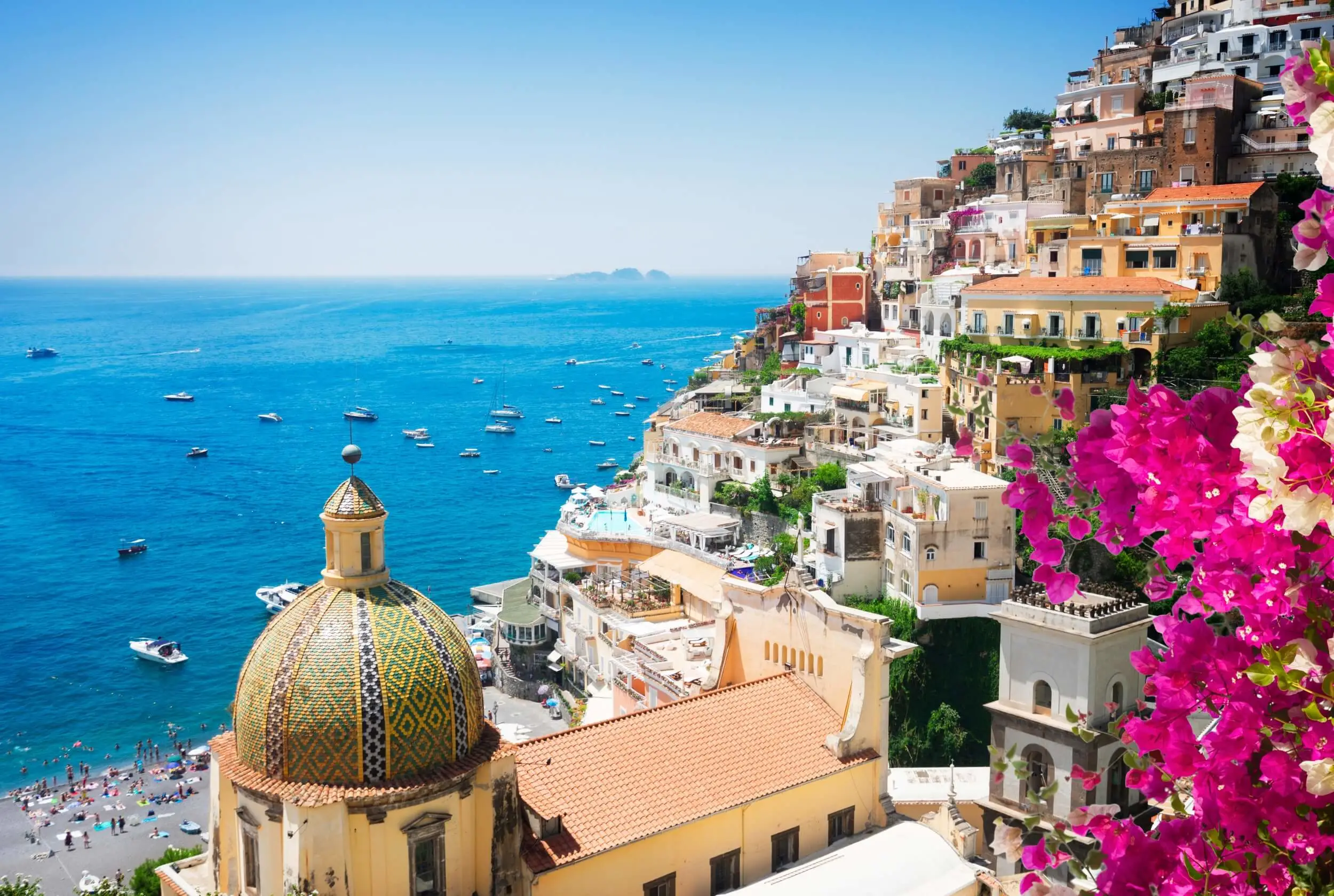
Positano
Visit the most beautiful and most popular town on the Amalfi Coast.
Show More
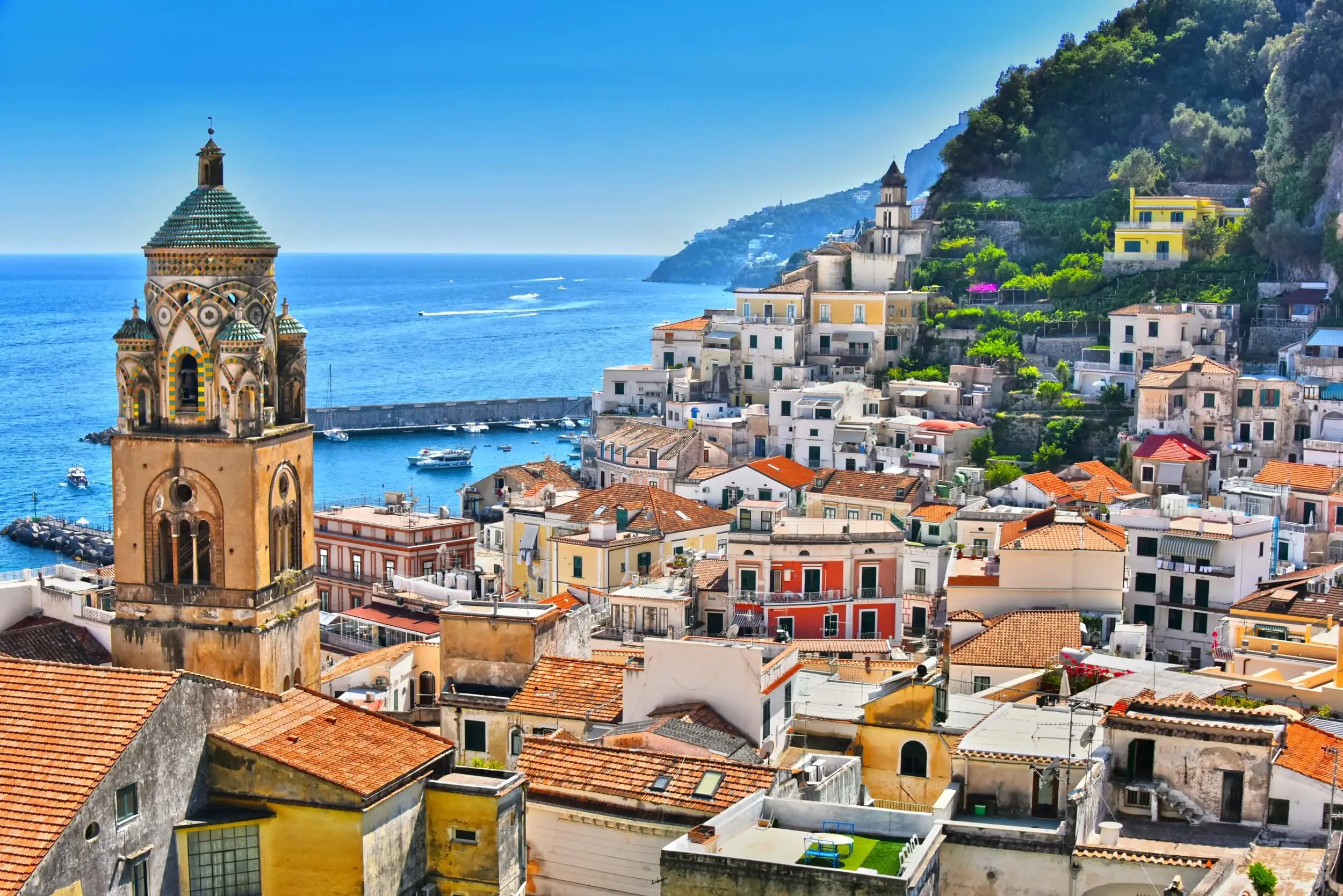
Amalfi Town
Visit the largest town on the Amalfi Coast known for its culture, history and beaches.
Show More

Amalfi Cathedral
Visit one of the most important Cathedrals on the Amalfi Coast.
Show More

Positano
Visit the most beautiful and most popular town on the Amalfi Coast.
Show More

Amalfi Town
Visit the largest town on the Amalfi Coast known for its culture, history and beaches.
Show More

Amalfi Cathedral
Visit one of the most important Cathedrals on the Amalfi Coast.
Show More

Positano
Visit the most beautiful and most popular town on the Amalfi Coast.
Show More
prev
next

Day 3
Sorrento


Positano
 Highlight of Amalfi Coast
Highlight of Amalfi CoastVisit the most beautiful and most popular town on the Amalfi Coast.
Known for its colorful buildings, beautiful panoramas, excellent seafood restaurants and luxury boutique shops, Positano is the go-to town for most people visiting the Amalfi Coast. Wander its narrow streets, spend time on its beach front or walk to the top of town to enjoy the famous views over the town and sea below.

Amalfi Town
 Highlight of Amalfi Coast
Highlight of Amalfi CoastVisit the largest town on the Amalfi Coast known for its culture, history and beaches.
What was once an important trading centre is now a stunning seaside town and the second most visited after Positano. Spend time relaxing on the beach and dip your toes in the azure water, visit its historic Cathedral, enjoy a cold lemon spritz in one of its seafront restaurants or simply enjoy strolling around its lanes and take in its views.

Amalfi Cathedral
 Highlight of Amalfi Coast
Highlight of Amalfi CoastVisit one of the most important Cathedrals on the Amalfi Coast.
The Amalfi Cathedral called “Duomo di Sant’Andrea Apostolo” can be found on the main Piazza Duomo in Amalfi Town. Built during the ninth century with a Byzantine architecture style, the cathedral is considered a must-visit for anyone who comes to Amalfi. Today the Duomo is a mix of Romanesque, Gothic and Baroque style, with an imposing staircase that leads to a 1,000-year-old bronze door that was given to the town by a wealthy local merchant who had the door made in Constantinople - modern-day Istanbul. Follow a one-way route around its interior which includes relics of Saint Andrew, the Apostle (the patron saint of Amalfi), the crypt and the cloister.

Positano
 Highlight of Amalfi Coast
Highlight of Amalfi CoastVisit the most beautiful and most popular town on the Amalfi Coast.
Known for its colorful buildings, beautiful panoramas, excellent seafood restaurants and luxury boutique shops, Positano is the go-to town for most people visiting the Amalfi Coast. Wander its narrow streets, spend time on its beach front or walk to the top of town to enjoy the famous views over the town and sea below.

Amalfi Town
 Highlight of Amalfi Coast
Highlight of Amalfi CoastVisit the largest town on the Amalfi Coast known for its culture, history and beaches.
What was once an important trading centre is now a stunning seaside town and the second most visited after Positano. Spend time relaxing on the beach and dip your toes in the azure water, visit its historic Cathedral, enjoy a cold lemon spritz in one of its seafront restaurants or simply enjoy strolling around its lanes and take in its views.

Amalfi Cathedral
 Highlight of Amalfi Coast
Highlight of Amalfi CoastVisit one of the most important Cathedrals on the Amalfi Coast.
The Amalfi Cathedral called “Duomo di Sant’Andrea Apostolo” can be found on the main Piazza Duomo in Amalfi Town. Built during the ninth century with a Byzantine architecture style, the cathedral is considered a must-visit for anyone who comes to Amalfi. Today the Duomo is a mix of Romanesque, Gothic and Baroque style, with an imposing staircase that leads to a 1,000-year-old bronze door that was given to the town by a wealthy local merchant who had the door made in Constantinople - modern-day Istanbul. Follow a one-way route around its interior which includes relics of Saint Andrew, the Apostle (the patron saint of Amalfi), the crypt and the cloister.

Positano
 Highlight of Amalfi Coast
Highlight of Amalfi CoastVisit the most beautiful and most popular town on the Amalfi Coast.
Known for its colorful buildings, beautiful panoramas, excellent seafood restaurants and luxury boutique shops, Positano is the go-to town for most people visiting the Amalfi Coast. Wander its narrow streets, spend time on its beach front or walk to the top of town to enjoy the famous views over the town and sea below.
prev
next


Day 4
Sorrento
Day 4
Sorrento

Early Morning to Afternoon
Ischia Island
The largest island in the Bay of Naples, Ischia is more interesting geographically than Capri, which makes it great for gentle hikes, especially to its summit of Mt Epomeo, and its volcanic soils make for the cultivation of fine wines. It also has some lovely sun-bathing spots and an exquisitely picturesque coastal fortress.

Castello Aragonese
Walk across a causeway to reach this picturesque medieval castle located on a small island.
Show More
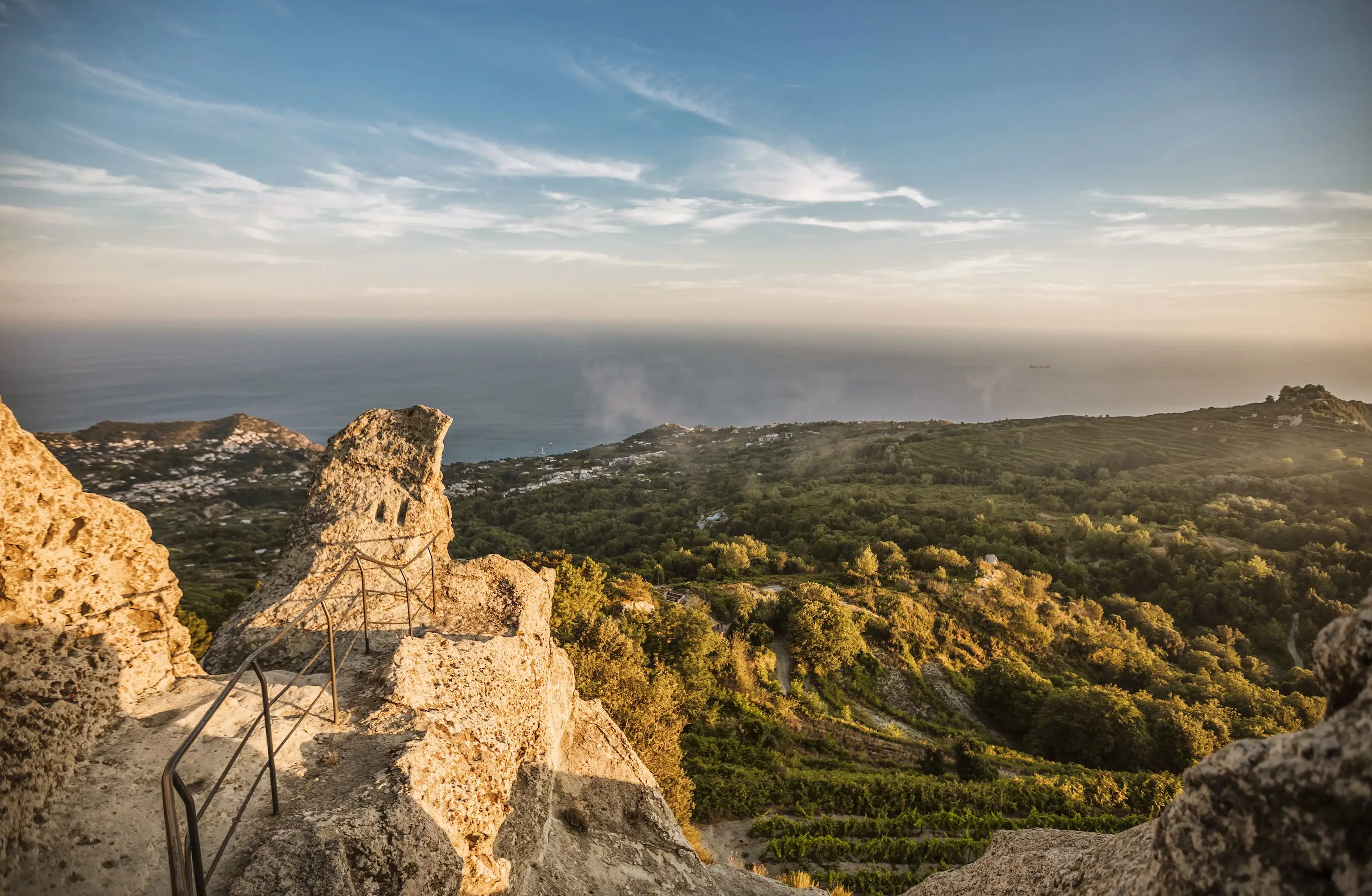
Mount Epomeo
Hike to the top of Mount Epomeo for breathtaking views over the island.
Show More

Castello Aragonese
Walk across a causeway to reach this picturesque medieval castle located on a small island.
Show More

Mount Epomeo
Hike to the top of Mount Epomeo for breathtaking views over the island.
Show More

Castello Aragonese
Walk across a causeway to reach this picturesque medieval castle located on a small island.
Show More

Mount Epomeo
Hike to the top of Mount Epomeo for breathtaking views over the island.
Show More
prev
next

Day 4
Sorrento


Castello Aragonese
 Highlight of Ischia Island
Highlight of Ischia IslandWalk across a causeway to reach this picturesque medieval castle located on a small island.
Accessed via the 15th century Ponte Aragonese, a 750 feet (228m) long causeway, the rocky islet fortress of Alfonso the Magnanimous is Ischia's top sight. As you explore you will understand why it made such a stunning backdrop in the film The Talented Mr Ripley. The citadel itself is showing signs of wear and tear and some of it is closed to the public, but below is a complex of buildings that could be almost a separate village, and you can wander around these by way of olive-shaded paths and lush terraces. There's an eerie open shell of a cathedral destroyed by British bombardment in 1806 and a prison that once held political prisoners during the Unification struggle. Otherwise, there are a couple nice cafe-restaurants from where you can enjoy the sea views. There's also the remains of a convent, in which a couple of dark rooms are ringed with a set of seats that look like stone toilets. These actually served as a cemetery for the deceased sisters - the bodies were placed on these seats to decompose, and the nuns would gather to pray here. While today this all seems rather macabre, the sisters considered it a reminder of their own ephemeral existence on earth.

Mount Epomeo
 Highlight of Ischia Island
Highlight of Ischia IslandHike to the top of Mount Epomeo for breathtaking views over the island.
Take a short but steep hike up to Ischia's highest point on Mount Epomeo to enjoy superb views of the entire island of Ischia and its many vineyards. On a clear day, you can even see Mount Vesuvius, Sorrento and the island of Capri in the distance. You need to be reasonably fit and wear good shoes, as the final part of the track becomes no more than a channel cut out of the soft rock. There's a rather good terrace cafe/restaurant at the top where you can take a refreshment break.

Castello Aragonese
 Highlight of Ischia Island
Highlight of Ischia IslandWalk across a causeway to reach this picturesque medieval castle located on a small island.
Accessed via the 15th century Ponte Aragonese, a 750 feet (228m) long causeway, the rocky islet fortress of Alfonso the Magnanimous is Ischia's top sight. As you explore you will understand why it made such a stunning backdrop in the film The Talented Mr Ripley. The citadel itself is showing signs of wear and tear and some of it is closed to the public, but below is a complex of buildings that could be almost a separate village, and you can wander around these by way of olive-shaded paths and lush terraces. There's an eerie open shell of a cathedral destroyed by British bombardment in 1806 and a prison that once held political prisoners during the Unification struggle. Otherwise, there are a couple nice cafe-restaurants from where you can enjoy the sea views. There's also the remains of a convent, in which a couple of dark rooms are ringed with a set of seats that look like stone toilets. These actually served as a cemetery for the deceased sisters - the bodies were placed on these seats to decompose, and the nuns would gather to pray here. While today this all seems rather macabre, the sisters considered it a reminder of their own ephemeral existence on earth.

Mount Epomeo
 Highlight of Ischia Island
Highlight of Ischia IslandHike to the top of Mount Epomeo for breathtaking views over the island.
Take a short but steep hike up to Ischia's highest point on Mount Epomeo to enjoy superb views of the entire island of Ischia and its many vineyards. On a clear day, you can even see Mount Vesuvius, Sorrento and the island of Capri in the distance. You need to be reasonably fit and wear good shoes, as the final part of the track becomes no more than a channel cut out of the soft rock. There's a rather good terrace cafe/restaurant at the top where you can take a refreshment break.

Castello Aragonese
 Highlight of Ischia Island
Highlight of Ischia IslandWalk across a causeway to reach this picturesque medieval castle located on a small island.
Accessed via the 15th century Ponte Aragonese, a 750 feet (228m) long causeway, the rocky islet fortress of Alfonso the Magnanimous is Ischia's top sight. As you explore you will understand why it made such a stunning backdrop in the film The Talented Mr Ripley. The citadel itself is showing signs of wear and tear and some of it is closed to the public, but below is a complex of buildings that could be almost a separate village, and you can wander around these by way of olive-shaded paths and lush terraces. There's an eerie open shell of a cathedral destroyed by British bombardment in 1806 and a prison that once held political prisoners during the Unification struggle. Otherwise, there are a couple nice cafe-restaurants from where you can enjoy the sea views. There's also the remains of a convent, in which a couple of dark rooms are ringed with a set of seats that look like stone toilets. These actually served as a cemetery for the deceased sisters - the bodies were placed on these seats to decompose, and the nuns would gather to pray here. While today this all seems rather macabre, the sisters considered it a reminder of their own ephemeral existence on earth.

Mount Epomeo
 Highlight of Ischia Island
Highlight of Ischia IslandHike to the top of Mount Epomeo for breathtaking views over the island.
Take a short but steep hike up to Ischia's highest point on Mount Epomeo to enjoy superb views of the entire island of Ischia and its many vineyards. On a clear day, you can even see Mount Vesuvius, Sorrento and the island of Capri in the distance. You need to be reasonably fit and wear good shoes, as the final part of the track becomes no more than a channel cut out of the soft rock. There's a rather good terrace cafe/restaurant at the top where you can take a refreshment break.
prev
next


Day 5
Depart Sorrento
Day 5
Depart Sorrento


9:00 AM - 12:00 PM
Guided Tour of Herculaneum
On this two hour private guided tour, you will discover the archeological ruins of Herculaneum. Learn about its history and see the most famous archaeological ruins.

Herculaneum Archaeological Site
Archaeological Museum
Show More

Herculaneum Archaeological Site
Archaeological Museum
Show More

Herculaneum Archaeological Site
Archaeological Museum
Show More

Herculaneum Archaeological Site
Archaeological Museum
Show More

Herculaneum Archaeological Site
Archaeological Museum
Show More
prev
next

Day 5
Depart Sorrento

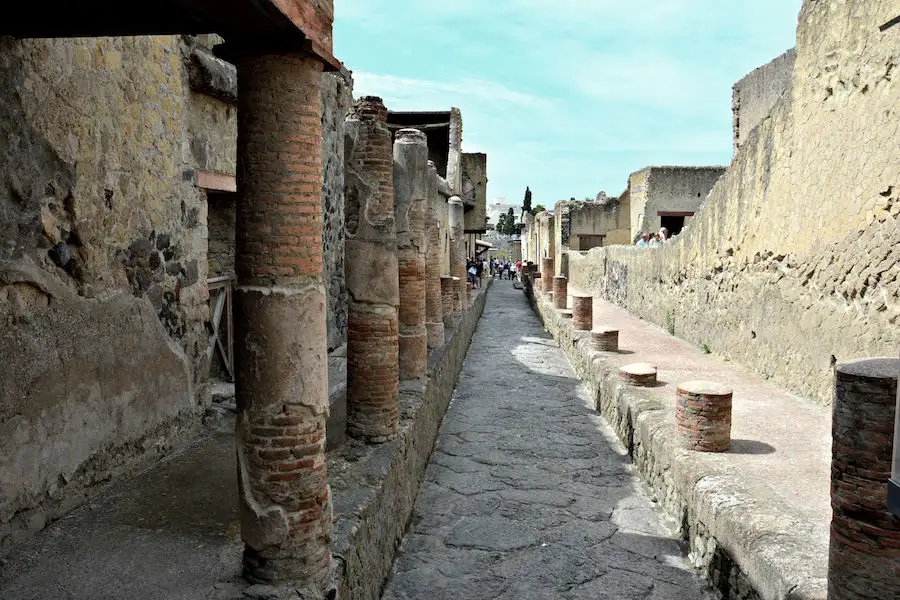
Herculaneum Archaeological Site
 Highlight of Guided Tour of Herculaneum
Highlight of Guided Tour of Herculaneum Archaeological Museum
The archaeological excavations of Herculaneum have revealed the remains of the ancient city of Herculaneum, buried under a blanket of ashes and mud during the eruption of Vesuvius in 79, together with Pompei, Stabia, and Oplonti.

Herculaneum Archaeological Site
 Highlight of Guided Tour of Herculaneum
Highlight of Guided Tour of Herculaneum Archaeological Museum
The archaeological excavations of Herculaneum have revealed the remains of the ancient city of Herculaneum, buried under a blanket of ashes and mud during the eruption of Vesuvius in 79, together with Pompei, Stabia, and Oplonti.

Herculaneum Archaeological Site
 Highlight of Guided Tour of Herculaneum
Highlight of Guided Tour of Herculaneum Archaeological Museum
The archaeological excavations of Herculaneum have revealed the remains of the ancient city of Herculaneum, buried under a blanket of ashes and mud during the eruption of Vesuvius in 79, together with Pompei, Stabia, and Oplonti.

Herculaneum Archaeological Site
 Highlight of Guided Tour of Herculaneum
Highlight of Guided Tour of Herculaneum Archaeological Museum
The archaeological excavations of Herculaneum have revealed the remains of the ancient city of Herculaneum, buried under a blanket of ashes and mud during the eruption of Vesuvius in 79, together with Pompei, Stabia, and Oplonti.

Herculaneum Archaeological Site
 Highlight of Guided Tour of Herculaneum
Highlight of Guided Tour of Herculaneum Archaeological Museum
The archaeological excavations of Herculaneum have revealed the remains of the ancient city of Herculaneum, buried under a blanket of ashes and mud during the eruption of Vesuvius in 79, together with Pompei, Stabia, and Oplonti.
prev
next

What's Included In Amalfi Coast Short Escape Trip

Pre-Paid Transportation:
- Public Transport Tickets for Naples
- Private Transfer from Naples Airport to Sorrento
- Private Transfer from Sorrento to Naples Airport

Go Real Travel Mobile App:
- Itinerary Plan & Reservations Info
- Points of Interest
- Detailed Travel Information
- Maps & Directions
Other Trips You May Like

9 Days
From$3790USD

10 Days
From$3870USD

9 Days
From$2356USD
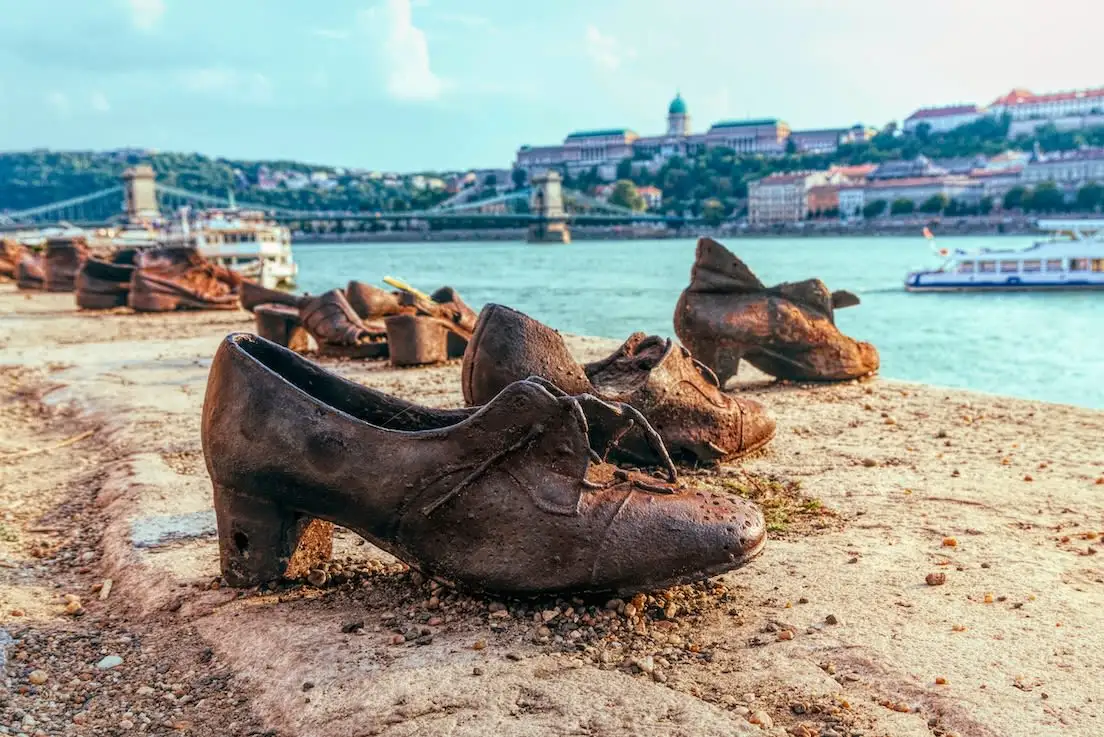
4 Days
From$897USD
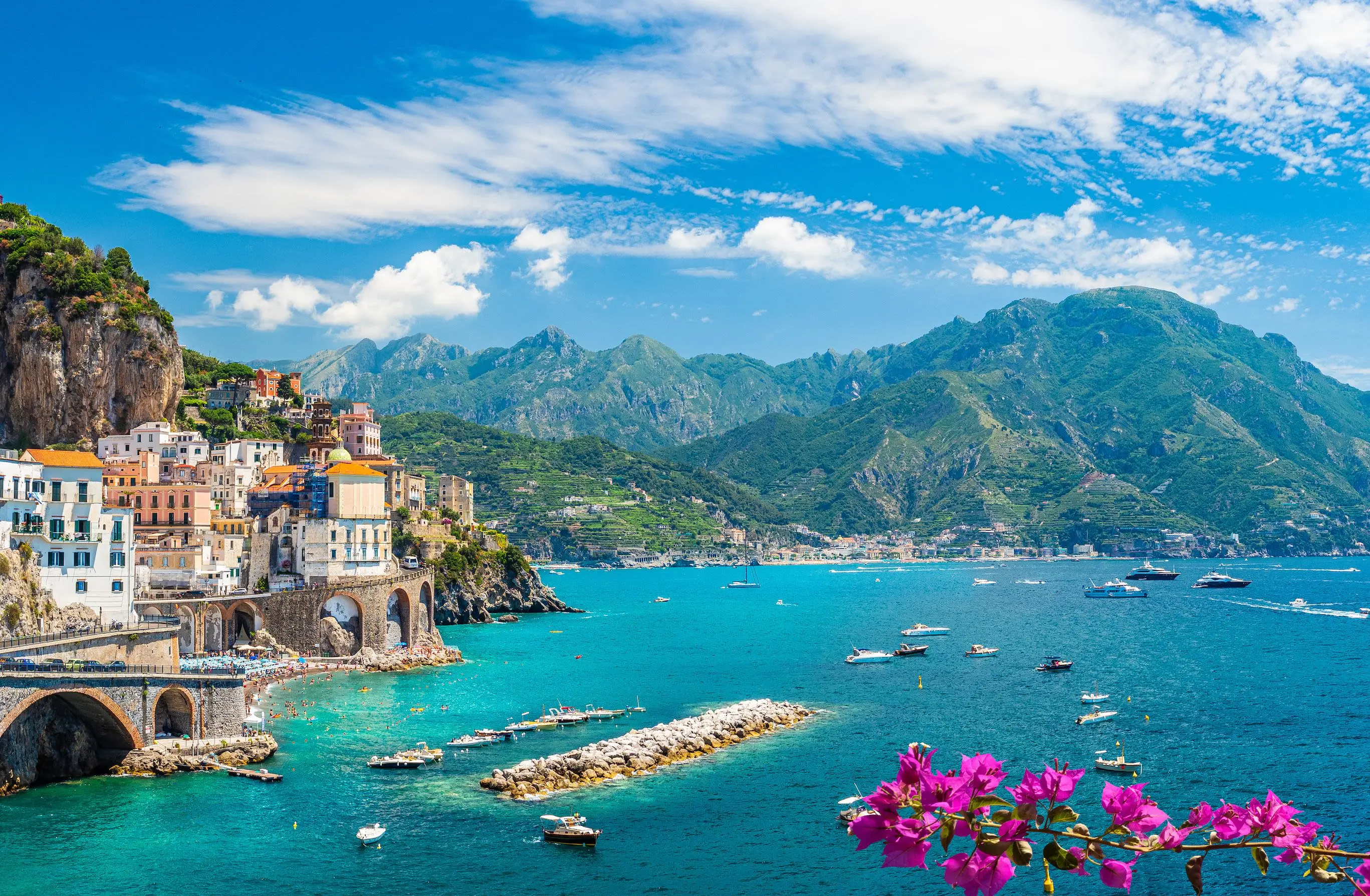
7 Days
From$1995USD
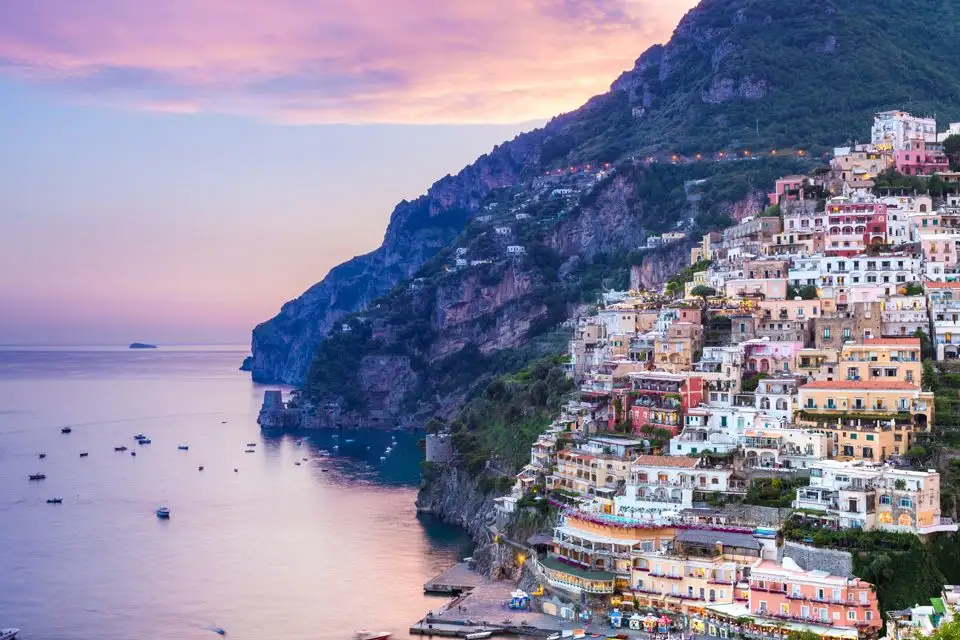
7 Days
From$2995USD
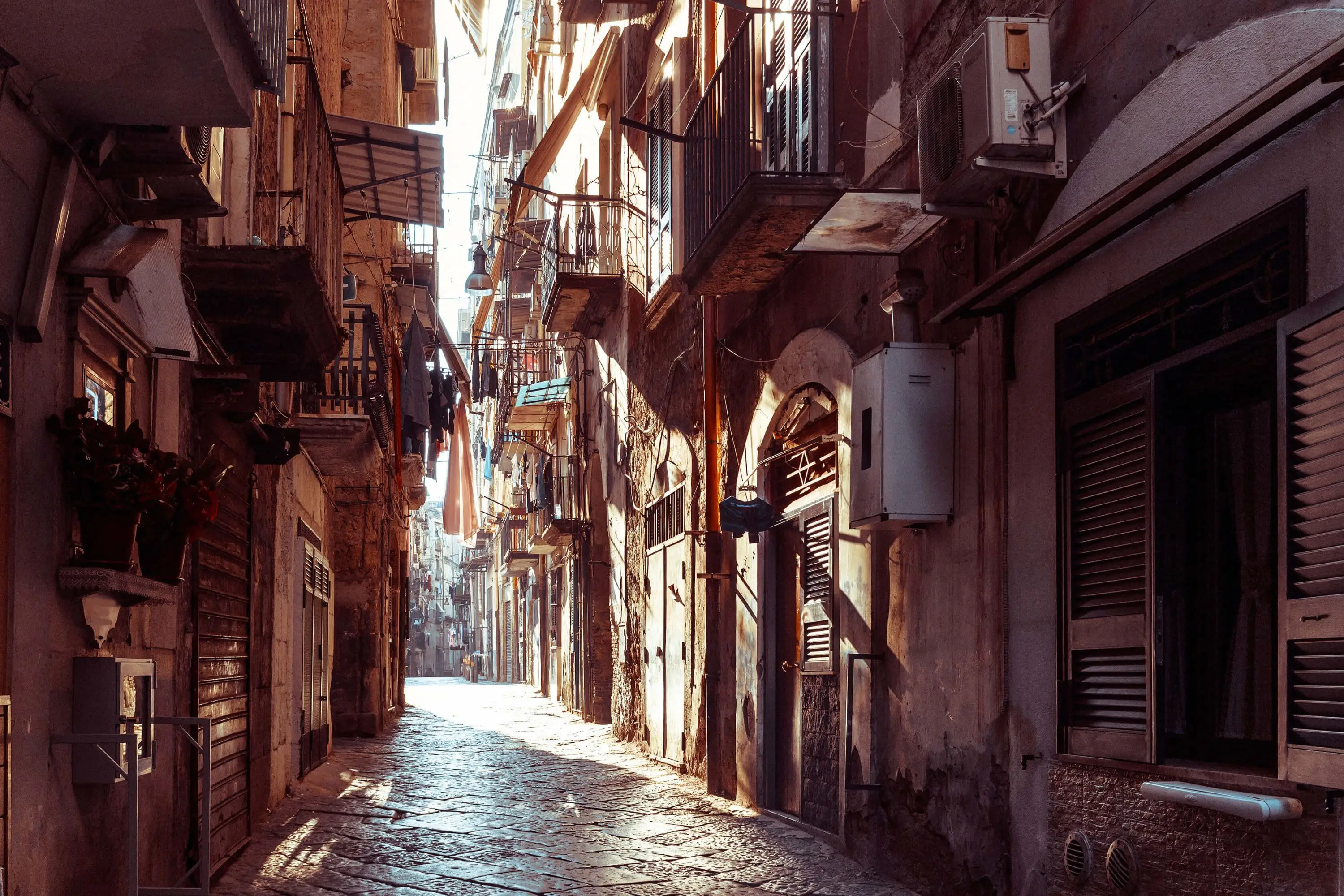
7 Days
From$1859USD

10 Days
From$2699USD

11 Days
From$4300USD

9 Days
From$3790USD

10 Days
From$3870USD

9 Days
From$2356USD

4 Days
From$897USD

7 Days
From$1995USD

7 Days
From$2995USD

7 Days
From$1859USD

10 Days
From$2699USD

11 Days
From$4300USD
prev
next
Featured Blogs
prev
next
Our Customers Say It Best
Marianne Strydom, Paarl, South Africa
I just wanted to thank you for organizing an amazing trip for me – I packed in so much in such a short period of time and everything was just perfect. The way you do things makes it possible to really get to know the destination, which for me as a travel agent could not have been better. 

Otto Chuy, Los Angeles, California
I am still surprised how everything worked as planned, without a hitch. All instructions in your itinerary were precise and correct. Your suggestions and comments in each of the locations we went to were very helpful. All your guides, without exception, were wonderful and exactly on time. 

Malini Dutta, Boston, Massachusetts
We can't thank you enough for the detailed plans, maps, and suggestions. It really felt that someone was holding our hands and showing us around. We had all the excitement of discovering foreign lands, with none of the problems that can happen while negotiating unfamiliar places. In fact, all the cities felt like home within a few hours of arriving and exploring. 

Bev and Mark Frankel, Williamsburg, Virginia
We could not be more pleased with Go Real Travel! You took the guess work out of things like public transport but still managed to allow us the freedom to tour as we wanted. Our guides were exceptional and every time I saw a Viking Cruise tour of 25 people, I realized the quality experience we were getting with Go Real. 

Marianne Strydom, Paarl, South Africa
I just wanted to thank you for organizing an amazing trip for me – I packed in so much in such a short period of time and everything was just perfect. The way you do things makes it possible to really get to know the destination, which for me as a travel agent could not have been better. 

Otto Chuy, Los Angeles, California
I am still surprised how everything worked as planned, without a hitch. All instructions in your itinerary were precise and correct. Your suggestions and comments in each of the locations we went to were very helpful. All your guides, without exception, were wonderful and exactly on time. 

Malini Dutta, Boston, Massachusetts
We can't thank you enough for the detailed plans, maps, and suggestions. It really felt that someone was holding our hands and showing us around. We had all the excitement of discovering foreign lands, with none of the problems that can happen while negotiating unfamiliar places. In fact, all the cities felt like home within a few hours of arriving and exploring. 

Bev and Mark Frankel, Williamsburg, Virginia
We could not be more pleased with Go Real Travel! You took the guess work out of things like public transport but still managed to allow us the freedom to tour as we wanted. Our guides were exceptional and every time I saw a Viking Cruise tour of 25 people, I realized the quality experience we were getting with Go Real. 



Explore cities in more detail
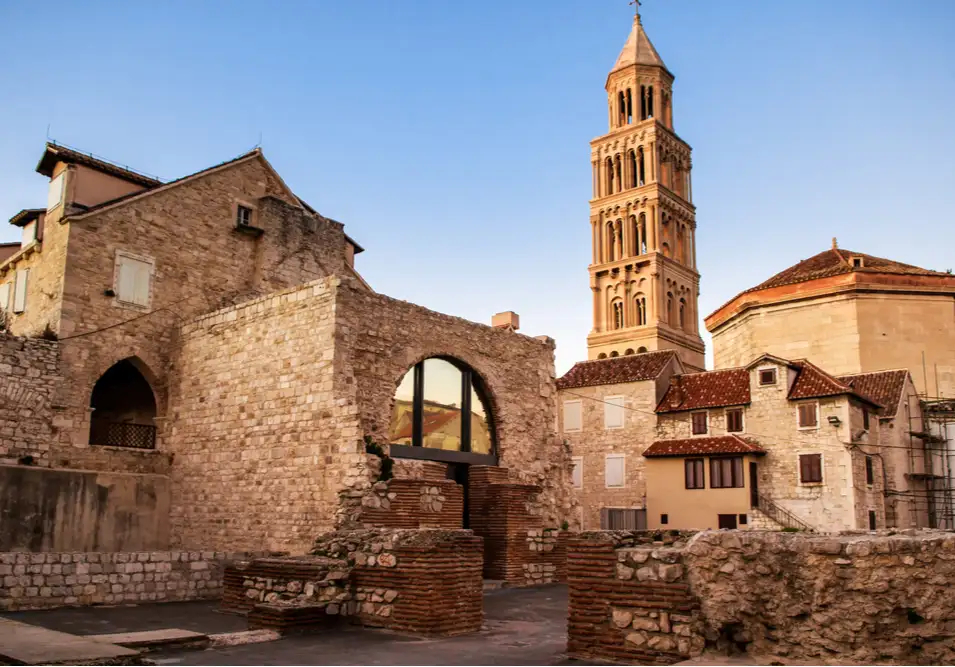
Split
A lively port city situated between mountains and sea, Split is one of Croatia's most visited—and most beautiful— cities. With historical monuments sprinkled across the Dalmatian coastline and trendy cafes and shops popping up within the ancient walls of the city center, it's easy to see why this extraordinary city is such a popular travel destination. Split is always abuzz with visitors and locals alike enjoying a seafood meal outside, relaxing on the beach, or boating on the Adriatic. The weather is almost always beautiful, so the streets tend to be crowded with people looking to take advantage of the sunshine. A walk through Split feels like a journey through past centuries. The coastal town showcases modern architecture next to structures like Diocletian's Palace, which date back to the times of the Roman Empire. In fact, Split's Old Town resides within the walls of Diocletian's Palace. As you stroll through the narrow marble streets, you'll be amazed by the number of modern restaurants and bars populating this ancient area. It's easy to pack plenty of culture, history, activity, and leisure all into one amazing trip.

Learn About Split
Build Split Trip
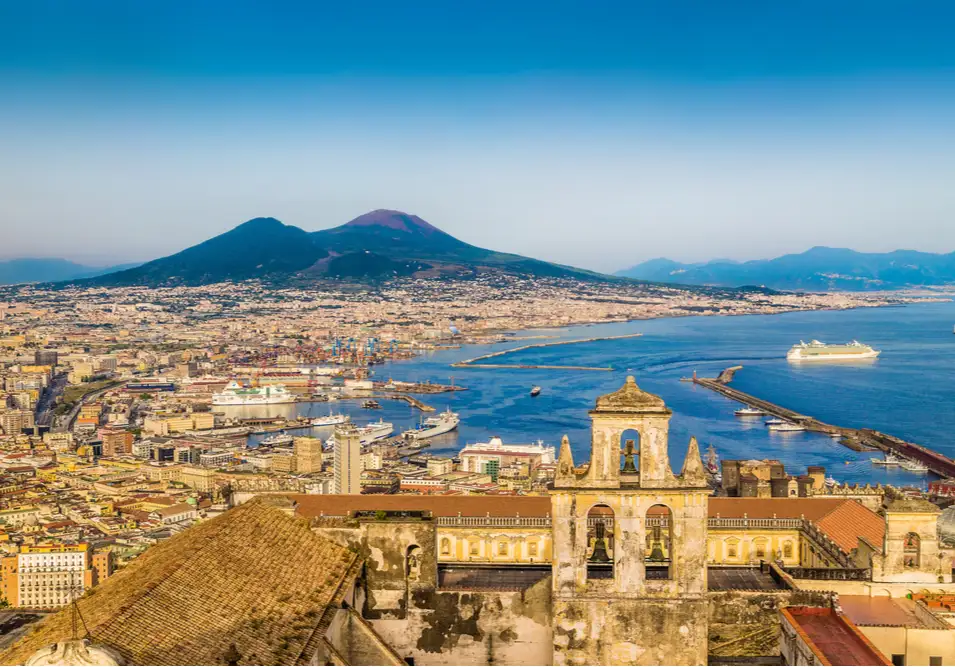
Naples
Gritty and chaotic Naples calls to travelers who want to experience the real Italy. Pressed along the coast of Campania, hilly Naples is jammed with maze-like streets, strung with outdoor clotheslines, descending toward the sea below. A much deserved UNESCO World Heritage site, Naples is famous for its churches, museums, castles, and catacombs. As you navigate the city, you’ll find yourself immersed by its culture and history. You can easily occupy a full day gazing at churches like the Naples Cathedral, San Francesco di Paola, and Cappella Sansevero. If you cast your eyes toward the Gulf of Naples, you’ll see Mount Vesuvius looming over the harbor. This foreboding volcano erupted in AD 79. Not far from the inner city — less than an hour by train — you’ll find the ancient town of Pompeii, its dramatic ruins still preserved in ash from the eruption. One of the best things you can do in Naples is to eat. This is the city where pizza was born. Propped up by its ripe tomatoes, local cheeses, and fresh fish, food from Naples has come to define what many see as the height of Italian cuisine. Everything you taste in Naples seems like a delicacy. Authentic and vivid, Naples is a true Italian city where the ancient world meets the modern-day with a bang.

Learn About Naples
Build Naples Trip

Aix en Provence
Aix en Provence is a warm city baked into the Provence-Alpes-Côte region of Southern France. Often referred to as simply ‘Aix’, this city is a starting point for traveling the Provencal region. Aix is set amongst a backdrop of rambling vineyards, quaint villages, and the imposing Sainte-Victoire mountain range. It’s no surprise that artists like Cézanne have devoted lifetimes to painting this landscape. Aromatic lavender fields in the north blossom once a year with a scent that defines the French countryside. Head south and you’ll find the rocky Mediterranean shore with dramatic Calanques cliffs and clear blue waters. With the sun out nearly all year round, locals live the epitome of the Mediterranean lifestyle. Wander through narrow medieval streets, shop at lively marketplaces, and enjoy a glass of rosé on a cafe terrace beneath the gentle Provencal sun. From old-world architecture and bubbling fountains to refined galleries and leafy parks, this leisurely city has everything you could ask of a French vacation.

Learn About Aix en Provence
Build Aix en Provence Trip

Sorrento
Sorrento is the perfect place to bask in the Mediterranean mood, somewhere to enjoy the sun, the sea, fine dining, and good wine. Churches like the Duomo and the Church del Carmine beg to be explored, along with museums, galleries, and castles. But mostly Sorrento is somewhere to kick back and, for a few days, focus entirely on the business of living - and living well. Seafood dinners, Limoncello evenings, swimming, hiking, and boat trips are all perfect ways to pass time in this seaside haven. If you really tire of all that, Sorrento is well-placed for those looking to explore its surrounding region. A train ride away from Naples, and within fairly easy reach of Pompeii, Sorrento is the doorstep to the attractions of Campania. A short ferry ride away is the island of Capri, with its own collection of beaches, restaurants, and excellent hiking. It’s not necessary, however, to pack the days full of exploring and adventure. While all that is certainly possible, a perfectly acceptable alternative is just to relax and soak in the special Mediterranean vibe.

Learn About Sorrento
Build Sorrento Trip
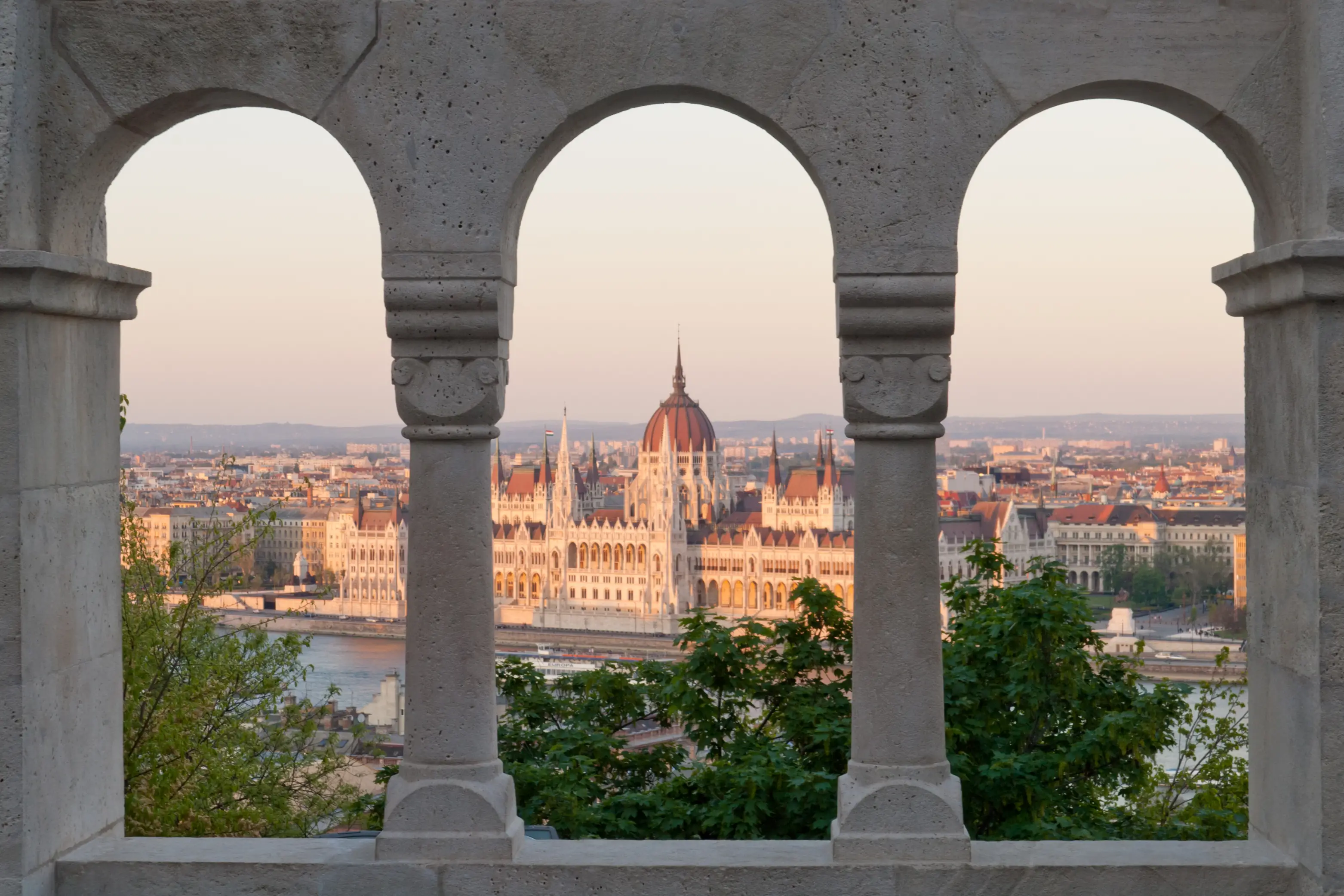
Budapest
Situated at the heart of Europe, Budapest is the capital of Hungary, appropriately named 'The Pearl of the Danube,' for its fixating and almost haunting beauty. Formerly two separate cities, Buda and Pest were forged into one by time, occupation, and the eight bridges that anchor them together today. From the Romans to the Communists, each occupier left its flavor profile in Budapest, evident in the famous spicy Hungarian stew known as 'goulash.' Budapest is a melting pot of history, culture, and taste, from the magnificent Baroque and neo-Gothic architecture to the Turkish thermal baths. After a long day of sightseeing, treat yourself to a glass of Tokaj, what King Louis XIV of France referred to as the "Wine of Kings, King of Wines". Budapest has a flavor to satisfy any taste.

Learn About Budapest
Build Budapest Trip

Dubrovnik
Situated in southern Croatia on the Adriatic Sea, Dubrovnik is famous for many different reasons. Everywhere you look in Dubrovnik is a stunning view. Known for its beautiful Old Town and ancient walls, Dubrovnik is a resilient city that deserves its nickname as the pearl of the Adriatic. Strolling through the limestone streets lined with baroque buildings, alongside the animated locals, will inspire you to keep exploring. The city walls offer spectacular views of the red rooftops in Old Town and the shimmering blues of the Adriatic Sea. After a tiring trek in the hot Croatian sun, cool off at one of Dubrovnik’s divine pebbly beaches and go swimming in the sea. The best way to end the day is a visit to Stradun, the main street, to pop into one of the cafes or restaurants, and relax during a delicious meal of Croatian specialties and wine.

Learn About Dubrovnik
Build Dubrovnik Trip

Split
A lively port city situated between mountains and sea, Split is one of Croatia's most visited—and most beautiful— cities. With historical monuments sprinkled across the Dalmatian coastline and trendy cafes and shops popping up within the ancient walls of the city center, it's easy to see why this extraordinary city is such a popular travel destination. Split is always abuzz with visitors and locals alike enjoying a seafood meal outside, relaxing on the beach, or boating on the Adriatic. The weather is almost always beautiful, so the streets tend to be crowded with people looking to take advantage of the sunshine. A walk through Split feels like a journey through past centuries. The coastal town showcases modern architecture next to structures like Diocletian's Palace, which date back to the times of the Roman Empire. In fact, Split's Old Town resides within the walls of Diocletian's Palace. As you stroll through the narrow marble streets, you'll be amazed by the number of modern restaurants and bars populating this ancient area. It's easy to pack plenty of culture, history, activity, and leisure all into one amazing trip.

Learn About Split
Build Split Trip

Naples
Gritty and chaotic Naples calls to travelers who want to experience the real Italy. Pressed along the coast of Campania, hilly Naples is jammed with maze-like streets, strung with outdoor clotheslines, descending toward the sea below. A much deserved UNESCO World Heritage site, Naples is famous for its churches, museums, castles, and catacombs. As you navigate the city, you’ll find yourself immersed by its culture and history. You can easily occupy a full day gazing at churches like the Naples Cathedral, San Francesco di Paola, and Cappella Sansevero. If you cast your eyes toward the Gulf of Naples, you’ll see Mount Vesuvius looming over the harbor. This foreboding volcano erupted in AD 79. Not far from the inner city — less than an hour by train — you’ll find the ancient town of Pompeii, its dramatic ruins still preserved in ash from the eruption. One of the best things you can do in Naples is to eat. This is the city where pizza was born. Propped up by its ripe tomatoes, local cheeses, and fresh fish, food from Naples has come to define what many see as the height of Italian cuisine. Everything you taste in Naples seems like a delicacy. Authentic and vivid, Naples is a true Italian city where the ancient world meets the modern-day with a bang.

Learn About Naples
Build Naples Trip

Aix en Provence
Aix en Provence is a warm city baked into the Provence-Alpes-Côte region of Southern France. Often referred to as simply ‘Aix’, this city is a starting point for traveling the Provencal region. Aix is set amongst a backdrop of rambling vineyards, quaint villages, and the imposing Sainte-Victoire mountain range. It’s no surprise that artists like Cézanne have devoted lifetimes to painting this landscape. Aromatic lavender fields in the north blossom once a year with a scent that defines the French countryside. Head south and you’ll find the rocky Mediterranean shore with dramatic Calanques cliffs and clear blue waters. With the sun out nearly all year round, locals live the epitome of the Mediterranean lifestyle. Wander through narrow medieval streets, shop at lively marketplaces, and enjoy a glass of rosé on a cafe terrace beneath the gentle Provencal sun. From old-world architecture and bubbling fountains to refined galleries and leafy parks, this leisurely city has everything you could ask of a French vacation.

Learn About Aix en Provence
Build Aix en Provence Trip

Sorrento
Sorrento is the perfect place to bask in the Mediterranean mood, somewhere to enjoy the sun, the sea, fine dining, and good wine. Churches like the Duomo and the Church del Carmine beg to be explored, along with museums, galleries, and castles. But mostly Sorrento is somewhere to kick back and, for a few days, focus entirely on the business of living - and living well. Seafood dinners, Limoncello evenings, swimming, hiking, and boat trips are all perfect ways to pass time in this seaside haven. If you really tire of all that, Sorrento is well-placed for those looking to explore its surrounding region. A train ride away from Naples, and within fairly easy reach of Pompeii, Sorrento is the doorstep to the attractions of Campania. A short ferry ride away is the island of Capri, with its own collection of beaches, restaurants, and excellent hiking. It’s not necessary, however, to pack the days full of exploring and adventure. While all that is certainly possible, a perfectly acceptable alternative is just to relax and soak in the special Mediterranean vibe.

Learn About Sorrento
Build Sorrento Trip

Budapest
Situated at the heart of Europe, Budapest is the capital of Hungary, appropriately named 'The Pearl of the Danube,' for its fixating and almost haunting beauty. Formerly two separate cities, Buda and Pest were forged into one by time, occupation, and the eight bridges that anchor them together today. From the Romans to the Communists, each occupier left its flavor profile in Budapest, evident in the famous spicy Hungarian stew known as 'goulash.' Budapest is a melting pot of history, culture, and taste, from the magnificent Baroque and neo-Gothic architecture to the Turkish thermal baths. After a long day of sightseeing, treat yourself to a glass of Tokaj, what King Louis XIV of France referred to as the "Wine of Kings, King of Wines". Budapest has a flavor to satisfy any taste.

Learn About Budapest
Build Budapest Trip

Dubrovnik
Situated in southern Croatia on the Adriatic Sea, Dubrovnik is famous for many different reasons. Everywhere you look in Dubrovnik is a stunning view. Known for its beautiful Old Town and ancient walls, Dubrovnik is a resilient city that deserves its nickname as the pearl of the Adriatic. Strolling through the limestone streets lined with baroque buildings, alongside the animated locals, will inspire you to keep exploring. The city walls offer spectacular views of the red rooftops in Old Town and the shimmering blues of the Adriatic Sea. After a tiring trek in the hot Croatian sun, cool off at one of Dubrovnik’s divine pebbly beaches and go swimming in the sea. The best way to end the day is a visit to Stradun, the main street, to pop into one of the cafes or restaurants, and relax during a delicious meal of Croatian specialties and wine.

Learn About Dubrovnik
Build Dubrovnik Trip
prev
next


 Map of Your Itinerary Route
Map of Your Itinerary Route
Zoom In to the cities to see your itinerary in more detail


 4.8
4.8 

